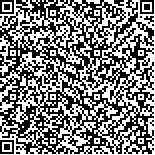|
| 引用本文: | 叶家桐, 毛世忠, 胡兴华, 朱晓珍, 段云博, 邓 涛, 黄仕训.矮紫金牛的开花生物学与繁育系统研究[J].广西植物,2023,43(2):379-389.[点击复制] |
| YE Jiatong, MAO Shizhong, HU Xinghua, ZHU Xiaozhen,
DUAN Yunbo, DENG Tao, HUANG Shixun.Flowering biology and breeding system of Ardisia humilis[J].Guihaia,2023,43(2):379-389.[点击复制] |
|
| |
|
|
| 本文已被:浏览 2854次 下载 1039次 |

码上扫一扫! |
|
|
| 矮紫金牛的开花生物学与繁育系统研究 |
|
叶家桐1, 2, 毛世忠2, 胡兴华2*, 朱晓珍2, 段云博2, 邓 涛2, 黄仕训2
|
|
1. 桂林理工大学 旅游与风景园林学院, 广西 桂林 541006;2. 广西壮族自治区
中国科学院 广西植物研究所, 广西 桂林 541006
|
|
| 摘要: |
| 矮紫金牛(Ardisia humilis)是优良的野生观赏植物。为探究该植物开花生物学与繁育系统特征,促进其杂交选育与园林应用,该研究以同质园引种的矮紫金牛为对象,对其开花物候、访花昆虫种类及访花行为进行观测,采用花粉离体萌发法和联苯胺-过氧化氢法,对花粉活力与柱头可授性进行检测,结合配子显微观测法和控制性授粉实验,对其繁育系统进行分析。结果表明:(1)花期为5月中下旬至6月中上旬,盛花期在5月底,单花、单株和群体水平的花期分别为1、17~20、25 d。(2)开两性花,雌蕊先熟,与雄蕊成熟期部分重叠,柱头可授性滞至雄蕊凋谢后1 d。(3)杂交指数(OCI)值为4,花粉/胚珠比(P/O)值为5.61×103,显示其繁育系统以异交为主,部分自交亲和,需要传粉者。(4)自然授粉的结实率最高(平均52.96%),其次是自花授粉(52.29%)和人工异株授粉(50.33%),三者差异不显著(P > 0.05),但均显著高于人工同株授粉的结实率(28.67%)(P < 0.05),显示矮紫金牛不仅异交亲和性强,还具有很强的自动自花授粉能力。(5)主要传粉昆虫包括隧蜂科的淡脉隧蜂属的Lasioglossum sp.1、Lasioglossum sp.2和隧蜂属的Halictus sp.,具有泛化传粉昆虫资源特征。该研究结果为矮紫金牛的资源利用与种质创新提供了重要的生物学理论参考。 |
| 关键词: 矮紫金牛, 开花生物学, 繁育系统, 访花昆虫, 传粉生物学 |
| DOI:10.11931/guihaia.gxzw202104043 |
| 分类号: |
| 文章编号:1000-3142(2023)02-0377-11 |
| 基金项目:国家自然科学基金(32060255); 广西自然科学基金(2013GXNSFAA019062); 广西科学院基本业务费项目(CQZ-E-1916); 广西植物研究所基本科研业务费项目(桂植业202105); 广西林草种质资源普查与收集项目(桂林科字[2021]第34号)。 |
|
| Flowering biology and breeding system of Ardisia humilis |
|
YE Jiatong1,2, MAO Shizhong2, HU Xinghua2*, ZHU Xiaozhen2,
DUAN Yunbo2, DENG Tao2, HUANG Shixun2
|
|
1. College of Tourism and Landscape Architecture, Guilin University of Technology, Guilin 541006, Guangxi, China;2. Guangxi
Institute of Botany, Guangxi Zhuang Autonomous Region and Chinese Academy of Sciences, Guilin 541006, Guangxi, China
1. College of Tourism and Landscape Architecture, Guilin University of Technology, Guilin 541006, Guangxi, China; 2. Guangxi
Institute of Botany, Guangxi Zhuang Autonomous Region and Chinese Academy of Sciences, Guilin 541006, Guangxi, China
|
| Abstract: |
| Ardisia humilis is an excellent wild ornamental plant. For the purpose of fully utilization of this elite germplasm, the flowering biology and breeding system of this plant had been explored in this study. We conducted field investigation in the flowering phenology, flower-visiting insect and their visiting behaviors on A. humilis individuals introduced in homogeneous garden. Furthermore, pollen viability and stigma receptivity were detected by pollen germination in vitro and benzidine-hydrogen peroxide method, respectively. Combined with artificial pollination,the self-compatibility and the self-pollination of A. humilis were also analyzed in this study. The results were as follows:(1)The florescence of A. humilis was from mid-late May to early June, and the full flowering period was at the end of May. The flowering period of the population, single plant and single flower were approximately 25 d, 17-20 d and 1 d, respectively.(2)A. humilis developed protogynic bisexual flowers, the pistil ripened first with partial overlaps on mature stage of pistil and that of stamen, while stigma remained receptivity until 1 d after stamens fall.(3)With the out-crossing index(OCI)value of 4 and pollen / ovule value of 5.61×103, the breeding system of A. humilis was considered to be outcrossing with partial self-compatibility, and the pollinator insects were essential.(4)The seed set of natural pollination ranked the highest level(average 52.96%), followed by that of autogamy(52.29%)and of artificial-cross pollination(50.33%), with no significant differences among the three(P>0.05), but significantly higher than that of artificial geitonogamy(28.67%)(P<0.05). This study indicated that, beside of being excellent flowering plant, A. humilis was also a potentially important ornamental fruit plant due to the generalized pollination system and the strongly autogamy ability which enhancing the high success of fruits development from blossoms.(5)Lasioglossum sp. 1, Lasioglossum sp. 2 and Halictus sp. were the most observed floral visitors on Ardisia humilis. This study provides an important theoretical reference for the resource utilization and germplasm innovation of A. humilis. |
| Key words: Ardisia humilis, flowering biology, breeding system, flower-visiting insect, pollination biology |
|
|
|
|
|